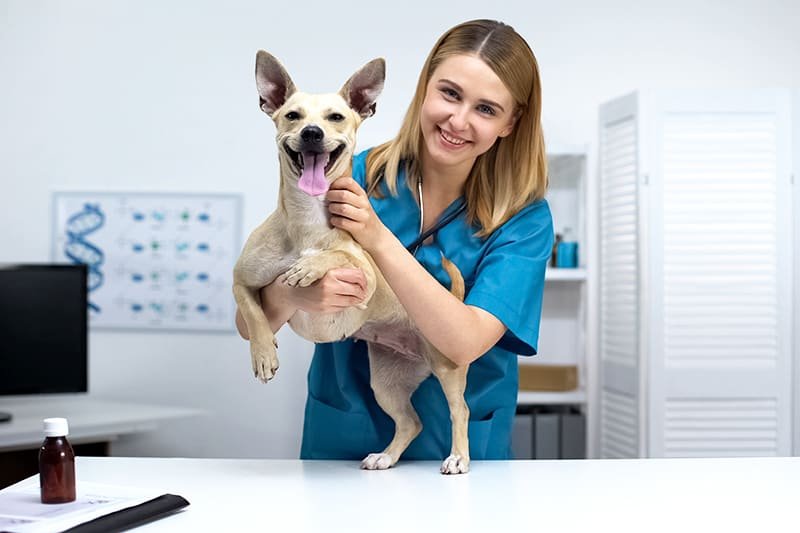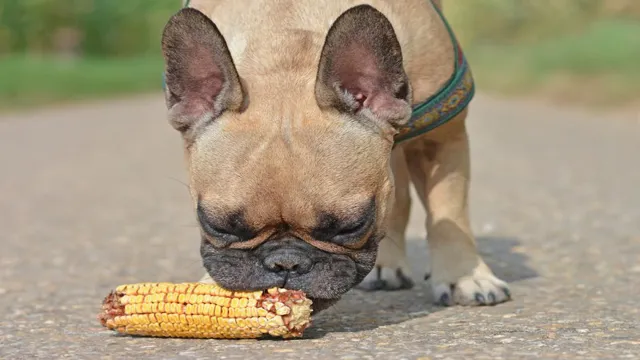How to Safely Feed Your Dog With a Cone On
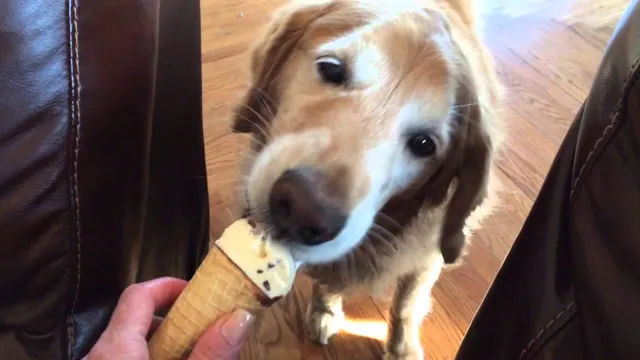
Are you wondering if you can feed your pup while they’re wearing a cone? Well, the answer is yes, but you need to be aware of a few important things. While it might seem like an inconvenience to feed your furry friend while they are wearing a cone, it is important to ensure they are eating healthy and not coming into contact with anything that could cause an infection or irritation. In this blog, we will discuss the best ways to feed your pup with a cone on so that they can stay healthy and happy.
Reasons Dogs May Need to Wear a Cone
When it comes to caring for our canine companions, one of the most important aspects is providing them with the proper protection and care they need. One item that many pet owners may be unfamiliar with is the cone, which is a protective device often used to help prevent pets from licking or biting at wounds or injuries. This article will explore the reasons why a dog may need to wear a cone, how long a dog should wear a cone, and how to ensure that your four-legged friend is comfortable wearing one. First, let’s look at why a dog may need to wear a cone. If a dog has a wound or injury that requires healing, a cone can help prevent the dog from licking or biting at the affected area.
This can help the wound heal faster and with fewer complications. In addition, dogs may need to wear a cone if they have skin conditions, such as hot spots or allergies, that require topical medications. Applying these medications can be difficult if the dog is licking or biting at the affected area, so the cone can help keep them from doing so. Finally, some dogs may need to wear a cone if they have undergone a surgical procedure. This is to prevent the dog from licking at the surgical site and to help the wound heal properly.
Now, let’s look at how long a dog should wear a cone. Generally, a dog should wear a cone until their wound or injury has healed. If the dog has a skin condition, they may need to wear the cone for a longer period of time as directed by their veterinarian. Finally, it’s important to ensure that your four-legged friend is comfortable wearing a cone. If the cone is too tight or too loose, it can cause discomfort or make it difficult for the dog to move around.
It’s best to measure your dog for the correct size and adjust the cone as needed. In conclusion, there are many reasons why a dog
Medical Treatment
Caring for your pet is no easy task and one of the most important aspects of pet care is ensuring that your pet is getting the right nutrition. A common question many pet owners ask is: “Can dogs eat with a cone on?” The short answer is yes, although there are some precautions you should take. While a cone may restrict your pet’s ability to eat, it is possible to feed them with a cone on, as long as you take the necessary steps to ensure the cone remains in place and the food is easily accessible. It is important to provide a comfortable and safe environment for your pet while they are eating, as they may be more prone to choking or inhaling their food while wearing a cone. Additionally, it is important to monitor your pet while they are eating, to ensure that the cone is secure and that they are eating properly.
With the right medical treatment and care, your pet can enjoy a delicious meal, even with the cone on.
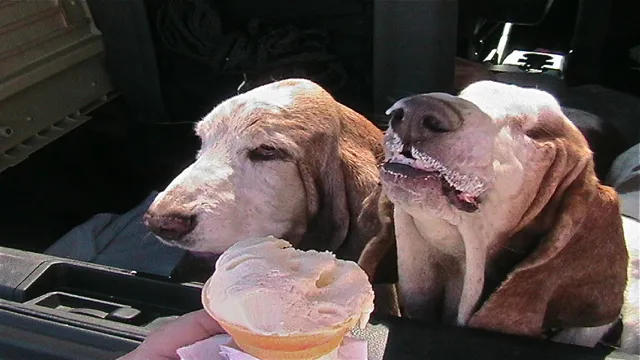
Injury Prevention
Dogs are one of the most beloved animals a person can own. But one of the most common issues that pet owners face is the prevention of injuries. One of the most common questions asked is if a dog can eat with a cone on. The answer is yes, but it may take some time for your pup to get used to it. Eating with a cone on can be tricky and may cause some mess, but with patience and consistency your pup will be able to enjoy their meal with their cone on.
So if you’re looking for a way to keep your pup safe and healthy, try feeding them with a cone on.
What to Feed a Dog With a Cone
Having a pet with a cone can be a challenging and sometimes frustrating experience for both the dog and their human parent. Dogs with a cone are unable to groom themselves, which can lead to itchiness and discomfort. Additionally, it can be difficult for dogs to eat comfortably with a cone on. Fortunately, there are some food options that can help make the experience easier. The most important thing when feeding a dog with a cone is to make sure that their food is soft and easy to eat.
Soft, wet food is usually the best choice. You can either buy pre-made wet food or you can make your own. Start by cooking some lean protein, such as chicken, beef or fish. Then mix it with a small amount of healthy carbohydrates, such as cooked rice, sweet potato or quinoa. Finally, add a small amount of healthy fats, such as olive oil, coconut oil or avocado.
This combination will provide your pet with the nutrition they need while being easy to eat with a cone. Another option is to feed your pet soft treats. Soft treats such as yogurt bites, banana chips, or freeze-dried liver all make great treats for dogs with a cone. Not only are these treats easy to eat, but they also provide your pet with some extra nutrition. Finally, you can make homemade meals for your pet.
Start by cooking some lean protein, such as chicken, beef or fish. Then mix it with a small amount of healthy carbohydrates, such as cooked rice, sweet potato or quinoa. Finally, add a few healthy fats, such as olive oil, coconut oil or avocado. This combination will provide your pet with the nutrition they need while being easy to eat with a cone. Caring for a dog with a cone can be challenging, but with a little extra effort, you can make sure they get the nutrition they need while still being comfortable and happy.
By choosing soft, wet food,
Soft Food
Cone-shaped collars, often called Elizabethan or “e-collars,” are a common sight in veterinary practice. But can dogs eat food while wearing a cone? The answer is yes – but only if you take the proper precautions. First, make sure the food is soft and easily digestible, such as canned food or boiled chicken. Additionally, the cone should fit snugly but not too tightly around your pup’s neck – otherwise, they may choke. And finally, you should always feed your pup while they’re sitting or standing in a comfortable position.
With these tips in mind, you can rest assured that your pup can enjoy their meals even with a cone on.
Small Pieces
Can dogs eat while wearing a cone? This common question has a simple answer – yes, but with a few caveats. While it is possible for a dog to eat and drink with a cone on, it can be a clumsy and uncomfortable experience. Eating with a cone on requires a bit of extra patience and effort from both the dog and its pet parent. Additionally, it is important to ensure that the cone is not too tight and that it allows the dog to access its food and water without any issues. With a little practice and patience, it is possible for dogs to enjoy meals with their cone on, but it is important to take the necessary precautions to ensure their safety and comfort.
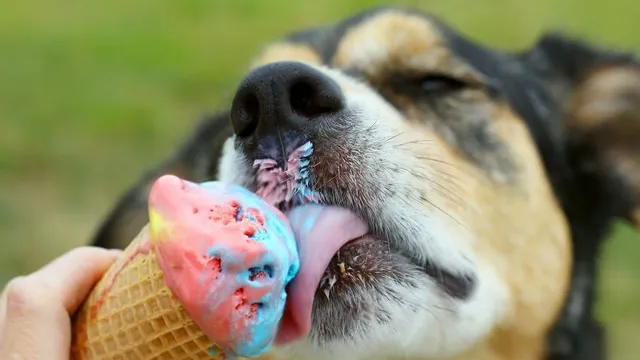
Cone-Friendly Treats
Your pup is already feeling a little down, having to wear a cone all the time. So, why not make them feel better with some delicious, cone-friendly treats? Sure, you can’t give them something as indulgent as a steak or a hamburger, but there are plenty of other delicious snacks you can give that won’t get stuck in the cone or cause your pup any additional frustration. Some of our favorites include frozen banana slices, boiled chicken, peanut butter-dipped carrots, and freeze-dried liver. All of these treats are nutritious, delicious, and cone-friendly so your pup can enjoy a tasty snack without having to take off the dreaded cone.
How to Make Eating With a Cone Easier
Eating with a cone can be a challenge for both you and your pet. Dogs, in particular, may struggle to use the cone to balance their food bowl and eat without spilling. Fortunately, there are a few tips and tricks you can use to make eating with a cone easier for your pup. The first thing you should do is make sure the cone is the right size. If the cone is too big, it can be difficult for your pup to balance and eat.
If it’s too small, it may not protect the fur around their face and neck. Measure your pup’s head and neck circumference and use those measurements to determine the right size cone. Another important tip is to make sure the cone is comfortable. If your pup is uncomfortable, they won’t want to eat. Look for a cone that is soft and lightweight, so it won’t bother your pup while they eat.
If your pup is resistant to wearing the cone, try adding a few treats or toys inside to make it more appealing. It’s also important to make sure the cone is secure to your pup’s head. If it’s not secure, your pup may be able to remove it and injure themselves. Use adjustable straps to make sure the cone is secure and won’t move around when your pup is eating. Finally, make sure the food bowl is easily accessible for your pup.
Place the food bowl on the ground and make sure your pup has plenty of space to get in and out of the cone. If the bowl is too high or too low, it can make it difficult for your pup to eat.
Eating with a cone doesn’t have to be a struggle. With a few simple tips and tricks, you can make eating with a cone easier and more enjoyable for both you and your pup.Adjust the Cone’s Height
Dogs are known for their curious nature and their ability to get into all sorts of things. But one thing that dogs don’t often think about is how their cone can affect their eating habits. While it may seem like a simple task to adjust the cone’s height to make it easier for your pup to eat, it can be the difference between an enjoyable meal time and an uncomfortable one. Not only can a cone that is too tall make it difficult for your pup to comfortably reach their food, but it can also cause them to choke or gag. So if you are wondering, “Can dogs eat with a cone on?” the answer is yes – but it’s important to make sure that the height is adjusted properly to ensure a safe and enjoyable mealtime for your pup!
Remove the Cone During Meals
Dining with a cone can be an unpleasant experience for both you and your pup. Not only does the cone interfere with your pup’s ability to eat, but it also makes it difficult for them to enjoy their mealtime. To make sure your pup is getting the most out of their meal, it’s best to remove the cone before mealtimes. Eating with a cone on can lead to missed nutrition, so it’s important to ensure your pup can enjoy their food without it. With the cone removed, your pup can enjoy a stress-free mealtime and get all the nutrition they need.
Conclusion
In conclusion, while it may be possible for dogs to eat with a cone on, it’s definitely not the most efficient way for them to consume their meals! The cone can get in the way, making it difficult for the dog to actually eat, so it’s best to remove it so they can eat comfortably.”
FAQs
Can dogs eat with a cone on?
Yes, dogs can eat with a cone on, but it should always be supervised to ensure that the cone does not restrict their breathing or cause them discomfort.
Is it safe to put a cone on a dog?
Yes, it is generally safe to put a cone on a dog, as long as it is the right size and fit. However, it is important to make sure that the cone does not restrict the dog’s breathing or cause them any discomfort.
How long can a dog wear a cone?
The amount of time that a dog can wear a cone depends on the individual dog and the type of cone being used. Generally, a cone should be removed after eating, playing, and engaging in other activities.
What should I do if my dog starts to chew on the cone?
If your dog starts to chew on the cone, it is important to remove it and provide a distraction or reward to discourage further chewing. If the cone is damaged, it should be replaced with a new one.
Are there alternatives to using a cone?
Yes, there are alternatives to using a cone, such as the use of a buster collar or a special pet collar. However, these alternatives should be discussed with a veterinarian to ensure that they are suitable for the individual dog.
How often should a cone be replaced?
A cone should be replaced regularly, as necessary, to ensure that it fits properly and is not damaged. It is also important to check the cone for signs of wear and tear, such as cracks, and replace it if necessary.


